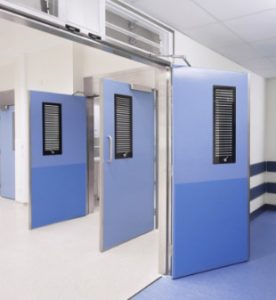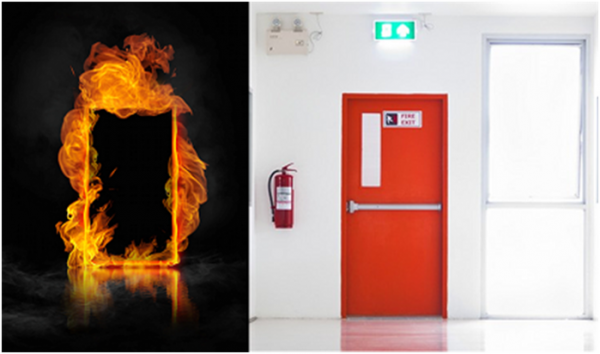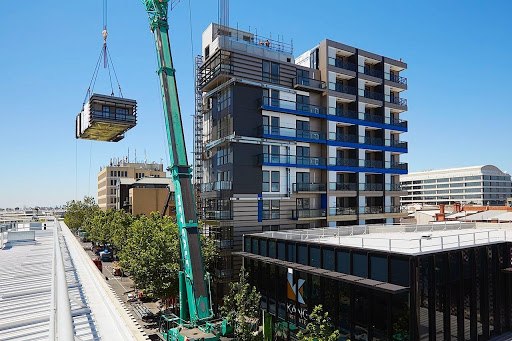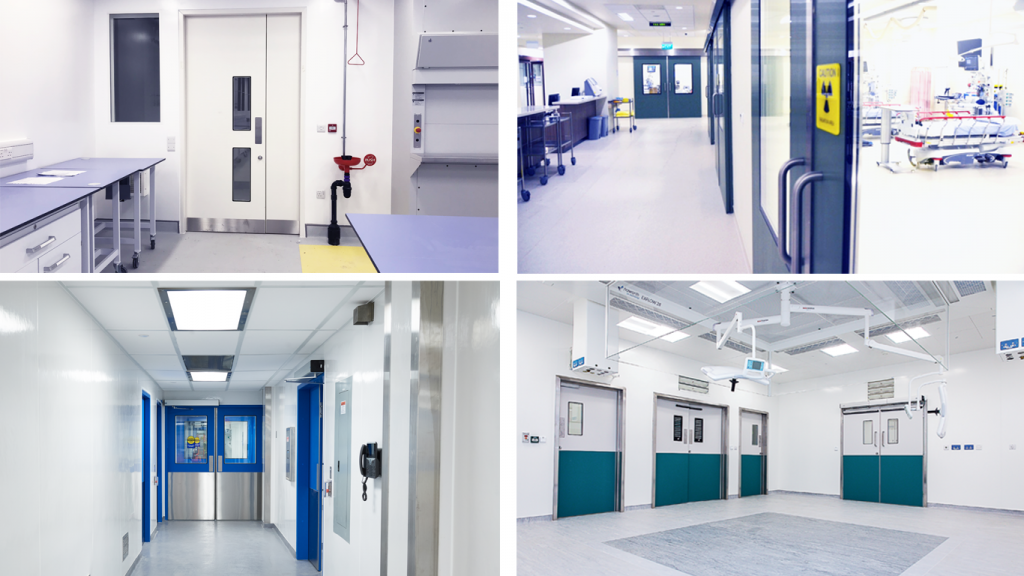Fire resistance is one of the most fundamental performance criteria for door sets. Fire doors are often the first line of defence in a fire and their correct specification, maintenance and management can be the difference between life and death for building occupants. So it’s essential to get the correct product.
The selection and installation of a fire resisting door set which is fire tested and proven compliant by a third party UKAS approved/TUV laboratory is not only incredibly important, its mandatory. A fire door is much more than just a door leaf. The door leaf, the frame, the hinges, the fittings, the hardware, the glass in the vision panels and the seals are all dependent upon each other, to ensure the effectiveness of the door in a fire. The full door assembly must be fire tested as a combination of all elements together, rather than each component individually.
Using doors that have third party fire tested proven compliance also gives specifiers confidence that a product is fit for purpose and is manufactured using a clear quality system. In addition, the specifier will have guaranteed third party fire test documentation that proves the fire performance has been independently verified, which is important for installers, inspectors and clients to ensure the relevant standards have been met.
Intumescent Seals
On average 388 people are killed and 11,100 are injured in fires each year in the UK alone. The most common identified cause of death from a fire incident is being overcome by gas, smoke or toxic fumes. The majority of these deaths, injuries and losses occur in buildings where fire and smoke protection measures have been inadequate.
Door edges are the part of a door-set most susceptible to penetration by fire. The pressure of a developed fire, drives hot gases between the door and frame leading to loss of integrity. The modern solution to this problem relies on the use of intumescent materials applied or set into the edge of doors or door frames opposite the door edge. Intumescent materials expand at around 180°C to several times their original size and fill the gap between the door and the frame, providing a barrier to the passage of hot gasses fumes and smoke.
This reinforces the importance of properly specified, installed and maintained fire doors with intumescent seals that prevent the spread of fire and keep smoke from leaking around the edges of the door.
Installation
Once the specifier has selected their fire tested BS/EN/SS compliant fire door it’s also important to make sure it is fitted correctly. The smallest gap or void between the door and frame can cause smoke or flames to escape and compromise the doors fire resistance. A certificated 30 minute fire doorset which is incorrectly installed may only provide 5-10 minutes of fire resistance. For this reason specifiers should always use professional installers who are fully trained.
Maintenance
All fire doors, hardware and fittings must remain in efficient working order at all times. Fire doors are often in high traffic areas and are opened and closed many times a day. For this reason, it is important that doors and components are inspected regularly and are repaired where necessary to a satisfactory standard. The frequency of inspection may vary, depending on the type and day-to-day use of a door.
Here’s our check List in summary for specifying and maintaining fire doors:
- Always use a reputable and competent supplier – many people claim to make fire doors, but only a handful have a properly tested product which is proven to work in a fire.
- Ask whether the product has been fire tested by a third party approved laboratory and demand to see the documentation that proves it (e.g. fire test report/certificate/Label).
- Specifying fire doors with intumescent/smoke seals is crucial to stop fire spreading and prevent smoke inhalation.
- It’s not just the door itself that matters. The frame and ironmongery is just as important – they all work together. Only buy exact compatible hardware and components from the same reputable supplier.
- Saving a few pounds on fire doors isn’t worth it. Consider the cost of damage and loss of life if a fire breaks out. Stick to the specification at all times.
- Correct installation is as important as buying the correct product – fire doors are a carefully engineered fire safety device which must be fitted correctly so make sure you use experienced installers from a reputable company.
- Fire doors should be checked regularly, and the more they’re used the more frequently they should be checked.
- Make sure you use an experienced door company to manage the servicing and maintenance of your fire doors.
- Only ever replace damaged components with like-for-like. A trained individual should be responsible for this maintenance work.





